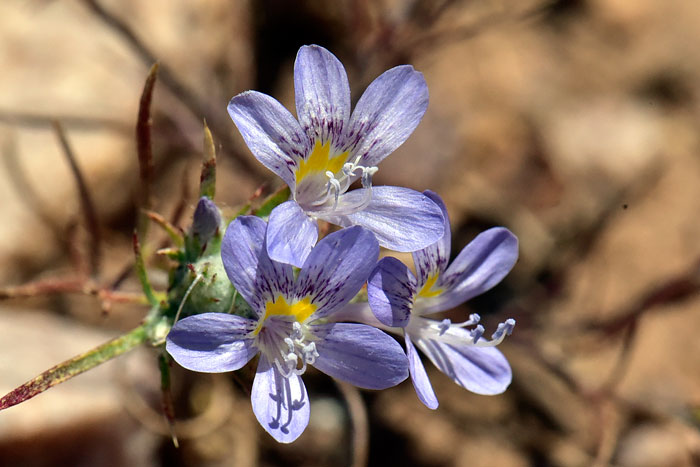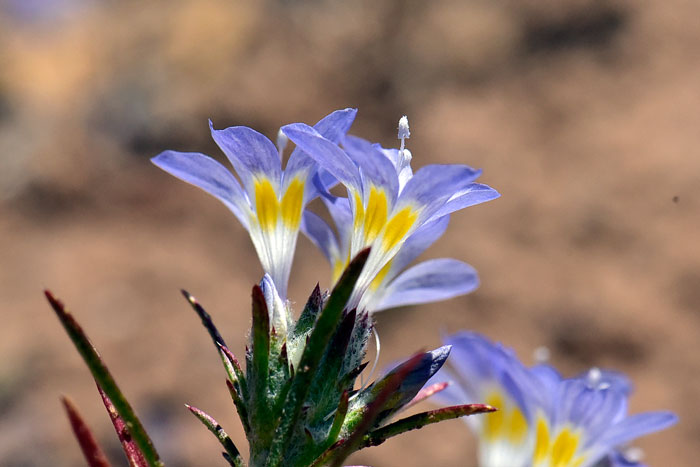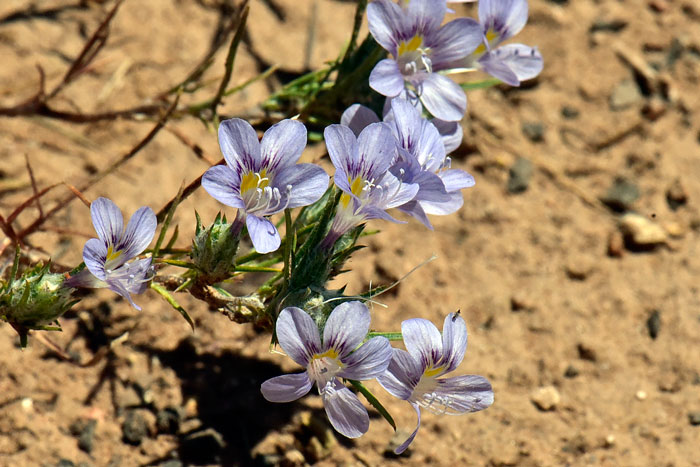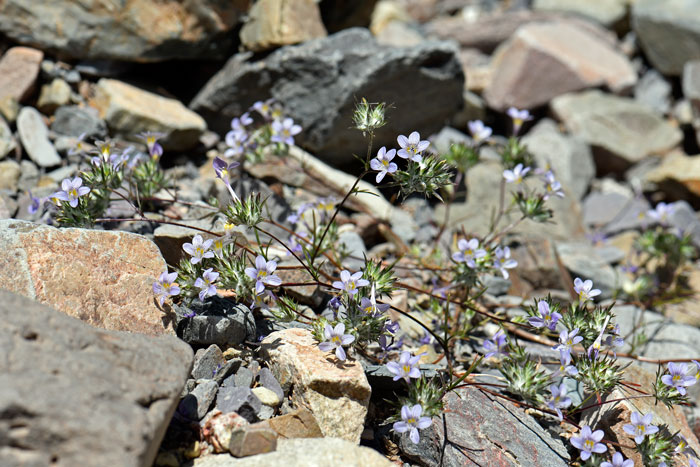Eriastrum eremicum, Desert Woolystar





Scientific Name: Eriastrum eremicum
Common Name: Desert Woolystar
Also Called: Desert Eriastrum, Desert Woolstar
Family: Polemoniaceae, Jacob’s Ladder or Phlox Family
Synonyms: ()
Status: Native
Duration: Annual, perennial;
Size: Up to 12 inches more or less.
Growth Form: Forb/herb;
Leaves: Green; alternate, pinnately lobed or simple, lobes linear to lanceolate.
Flower Color: Blue to whitish, pink; flowers in dense, leafy-bracted heads, cobwebby with long fine white hairs, calyx lobes generally unequal, corolla funnel-shaped, stamens equal or not, style included or not (exserted), fruit with 1 or few per chamber.
Flowering Season: March to June.
Elevation: Up to 5,000 feet.
Habitat Preferences: Common on dry plains and mesas.
Recorded Range: Eriastrum eremicum is found in the southwestern United States, Baja California and likely northwestern Mexico.
North America & US County Distribution Map for Eriastrum eremicum.
U.S. Weed Information: No information available.
Invasive/Noxious Weed Information: No information available.
Wetland Indicator: No information available.
Threatened/Endangered Information: No information available.
The Plant List includes 16 are accepted species names for the genus Eriastrum (Note minor discrepancy above).
There are 2 sub-species in Eriastrum eremicum:
Eriastrum eremicum subsp. eremicum, Desert Woollystar (AZ, CA, NV, UT)
Eriastrum eremicum subsp. yageri, Yager's Woollystar (AZ, NV)
Comments: Miniature Woollystar and Desert Woolystar are superficially similar in appearance, the differences are primarily technical.
Also see in Southwest Desert Flora; Miniature Woollystar, Eriastrum diffusum.
A drug of Desert Woolystar is made and used by the Paiute for diarrhea, as a stomach medicine is used with children with tuberculosis See ethno-botanical uses at Native American Ethnobotany, University of Michigan, Dearborn.

